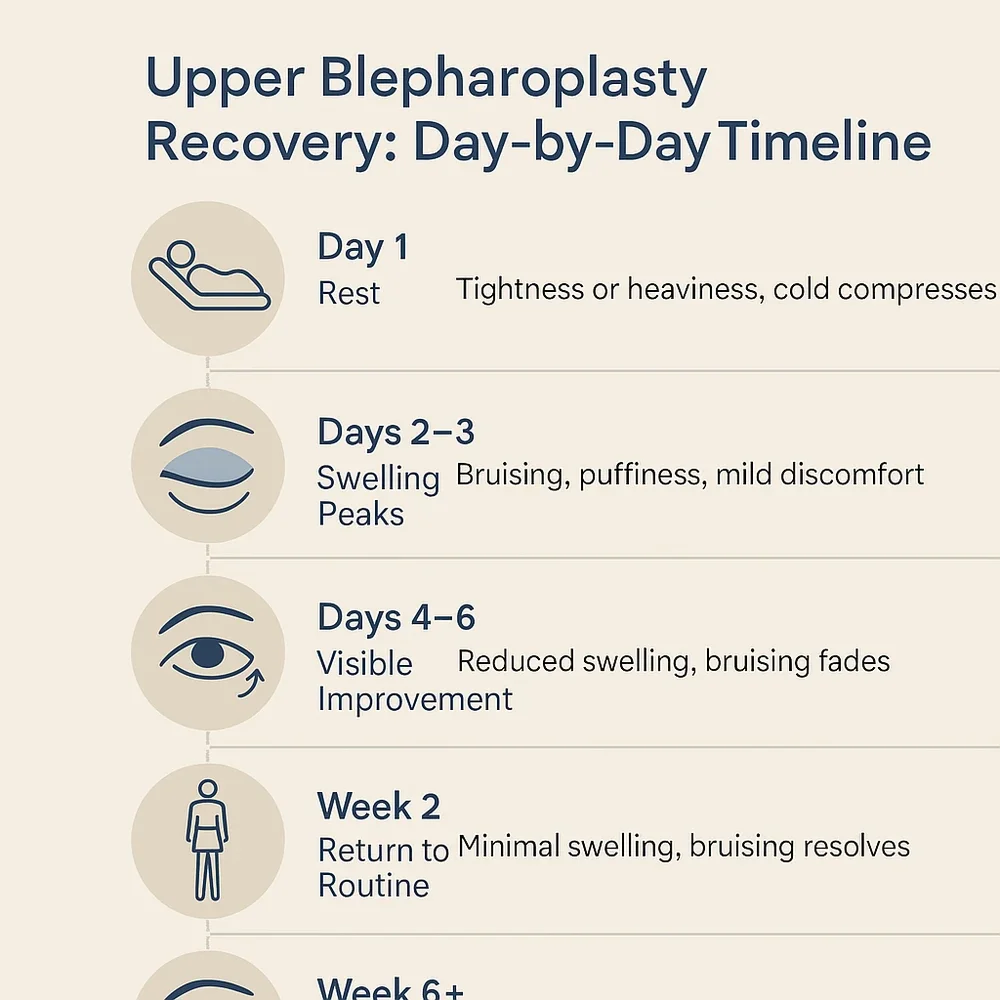Upper Blepharoplasty Day by Day: Realistic Recovery Expectations
Knowing exactly what to expect after upper blepharoplasty helps patients feel prepared, calm, and confident throughout recovery. Every day brings visible progress, and most patients find the process far easier than they imagined. Here’s a clear breakdown of what happens during the first few weeks after eyelid surgery.
Day 1: Rest and Cold Compress
You’ll rest at home the same day as surgery. The area around the eyes will feel tight or slightly heavy. Use prescribed ointment and apply cold compresses for 10 minutes every hour while awake to minimize swelling. Keep your head elevated and avoid bending forward.
Mild blurry vision from ointment is normal and fades quickly. You’ll be able to walk and perform light activities, but plan to rest most of the day.
Day 2–3: Swelling Peaks
Mild swelling and bruising peak around this time, but discomfort remains low. The eyelid skin may appear puffy or uneven. Gentle cleaning with sterile saline or a surgeon-approved wipe keeps the incision clean.
The eyes may feel dry or itchy; lubricating drops provide relief. Avoid screen time or reading for long periods to reduce strain.
Day 4–6: Improvement Begins
By the fourth day, swelling noticeably decreases. Bruising begins to change color, moving from purple to light yellow. You’ll feel more comfortable moving around and can resume light household activities.
If sutures were placed, they are typically removed around day five or six. The incision will already start blending with the natural eyelid crease.
Day 7–10: Back to Daily Routine
Most patients feel comfortable returning to work or social settings around one week after surgery. Swelling and discoloration continue to fade. Sunglasses remain helpful outdoors, both for comfort and scar protection.
According to the Mayo Clinic’s eyelid surgery recovery guidance, residual tightness or mild redness at this point is normal and gradually resolves without treatment.
Learn more about upper eyelid surgery (upper blepharoplasty) in Torrance and discover how meticulous surgical technique ensures minimal downtime and natural healing.
Week 2: Near Full Recovery
By the second week, bruising is nearly gone. Makeup can be used to conceal light redness once cleared by your surgeon. Most swelling has resolved, and eyelids begin to look natural. You can resume light exercise and full daily routines.
Weeks 3–6: Final Refinement
The incision line continues to soften, and redness fades completely. Any minor morning puffiness resolves quickly after waking. At this point, the eyes look refreshed and balanced, and scars are typically invisible.
Protect your results with sunscreen and consistent sleep habits. Proper skin care and hydration also help maintain smooth eyelid texture.
Month 3 and Beyond
By the three-month mark, your eyes appear fully healed and natural. Patients often say that friends and family notice how rested they look rather than suspecting surgery.


